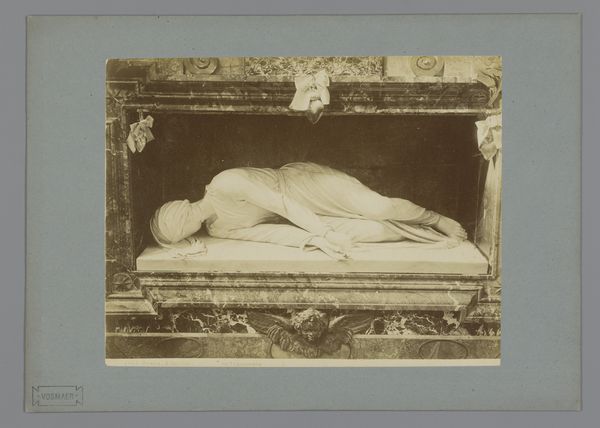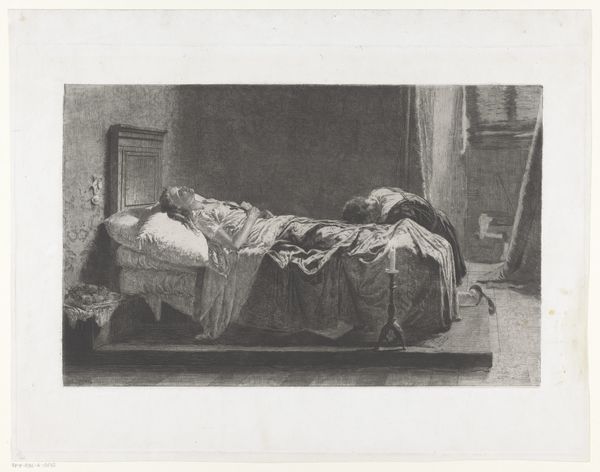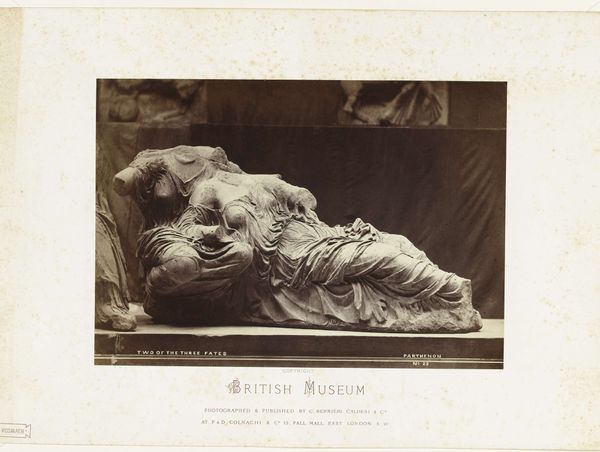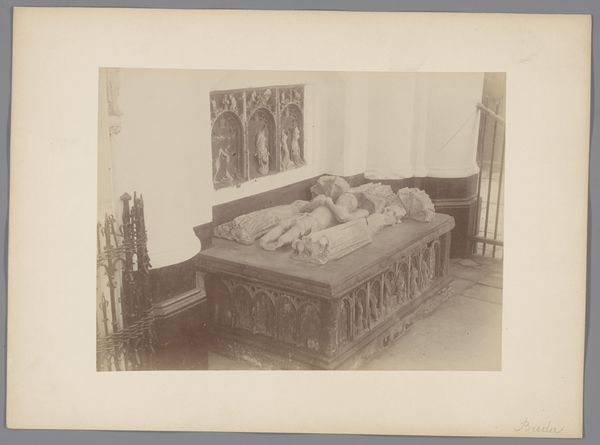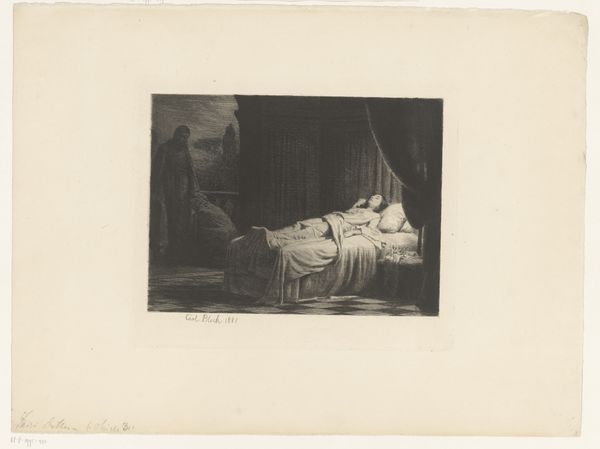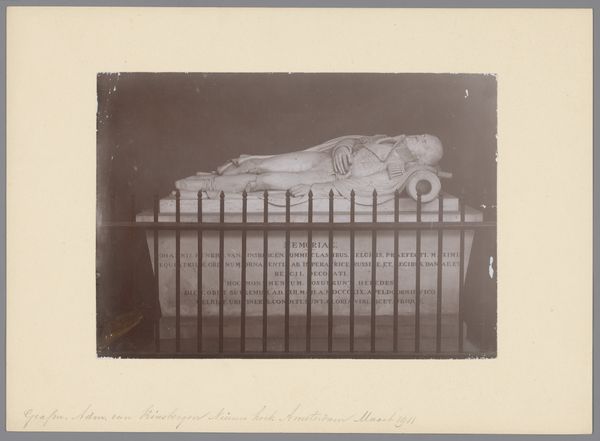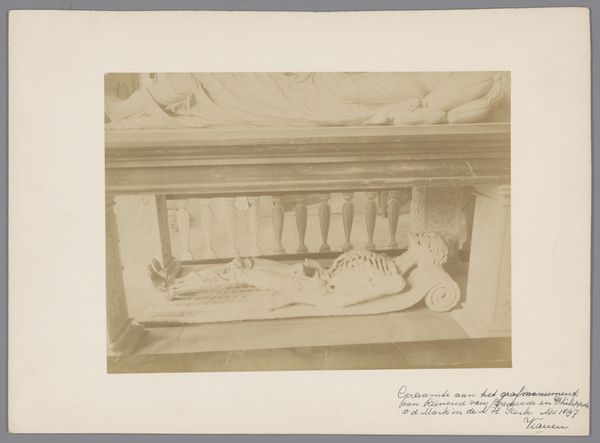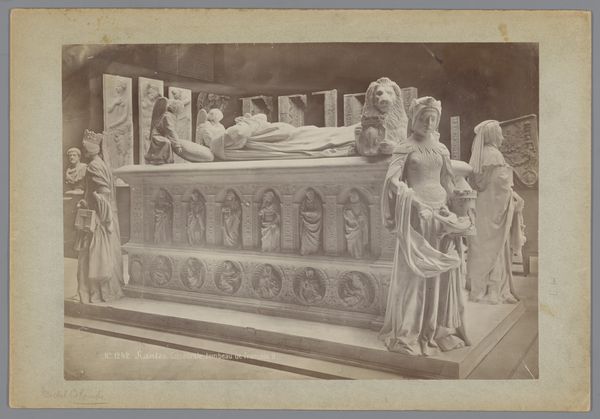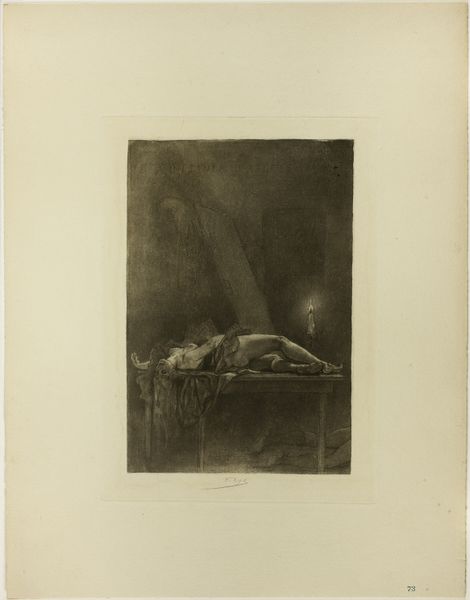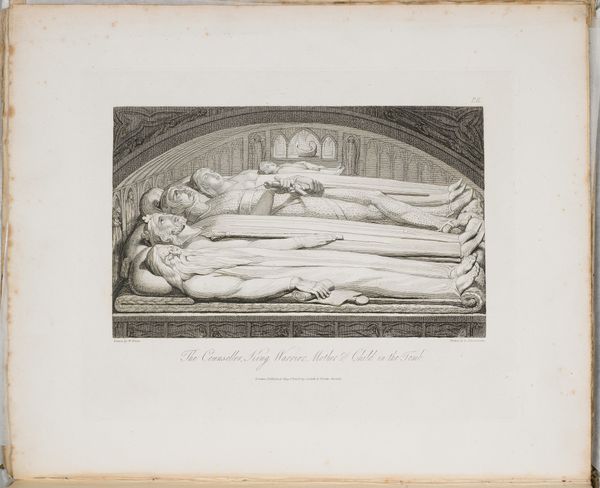
Het graf van Keizer Leopold II in de Kapucijner Grafkelder te Wenen 1850 - 1900
0:00
0:00
Dimensions: height 302 mm, width 397 mm
Copyright: Rijks Museum: Open Domain
Curator: This evocative gelatin-silver print, produced sometime between 1850 and 1900 by M. Frankenstein & Co., depicts “The Tomb of Emperor Leopold II in the Capuchin Crypt in Vienna.” It presents a staged photograph within this historically significant burial site. Editor: Gosh, talk about heavy. You can practically feel the weight of the stone and the oppressive silence in the crypt. That figure draped in white looks like a ghost herself. Curator: Indeed. Consider the piece in its temporal context. The late 19th century witnessed heightened interest in royal legacies and the consolidation of national identities. Photographs like these weren't just records, they actively shaped perceptions of power and mourning rituals. The photograph aestheticizes Leopold's resting place but also, I think, the idea of the Habsburg monarchy. Editor: Right. I keep coming back to that shrouded figure. It looks like a mourning vestal virgin or something. Dramatic, I mean, but also...slightly artificial, staged for the camera. Is it playing at sincerity, or is it really grief? Curator: I'd argue both are present. The photographic process then allowed for carefully constructed imagery, lending itself well to reinforcing particular narratives around rulers, empires, and historical trauma. Grief is deeply embedded in systems of gender and power, and even performative mourning speaks volumes. Editor: All this is fascinating. And kind of heartbreaking when I think of what's going on in our own time now, still the same kinds of performances and the same griefs over and over. Curator: Photography often serves to memorialize what we're afraid to forget. It compels ongoing considerations around power and its consequences. Editor: Makes me think we’ll be having this same conversation, generations from now, only with a different set of images. Okay, heavy but hopeful. Let’s move on.
Comments
No comments
Be the first to comment and join the conversation on the ultimate creative platform.

